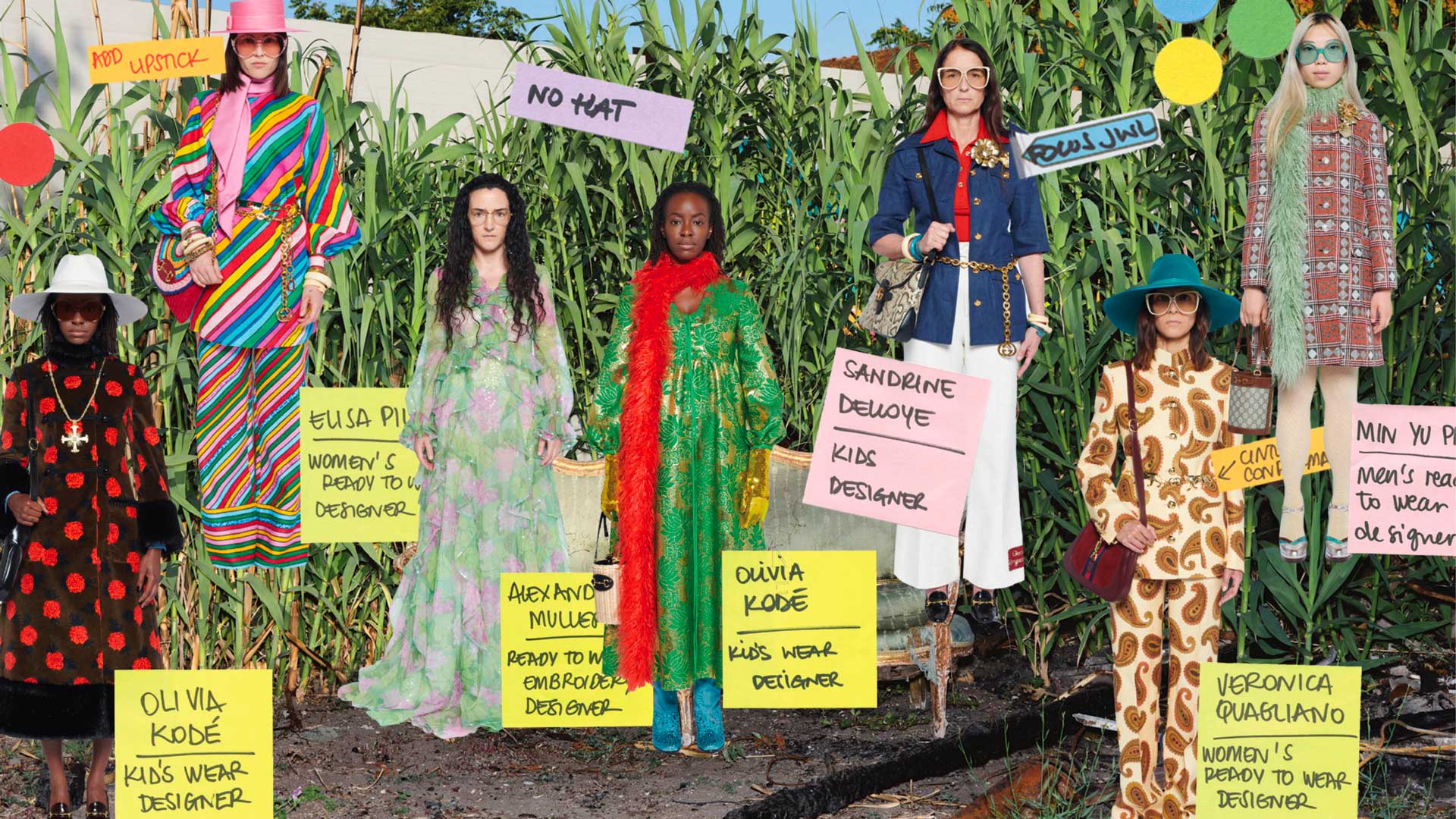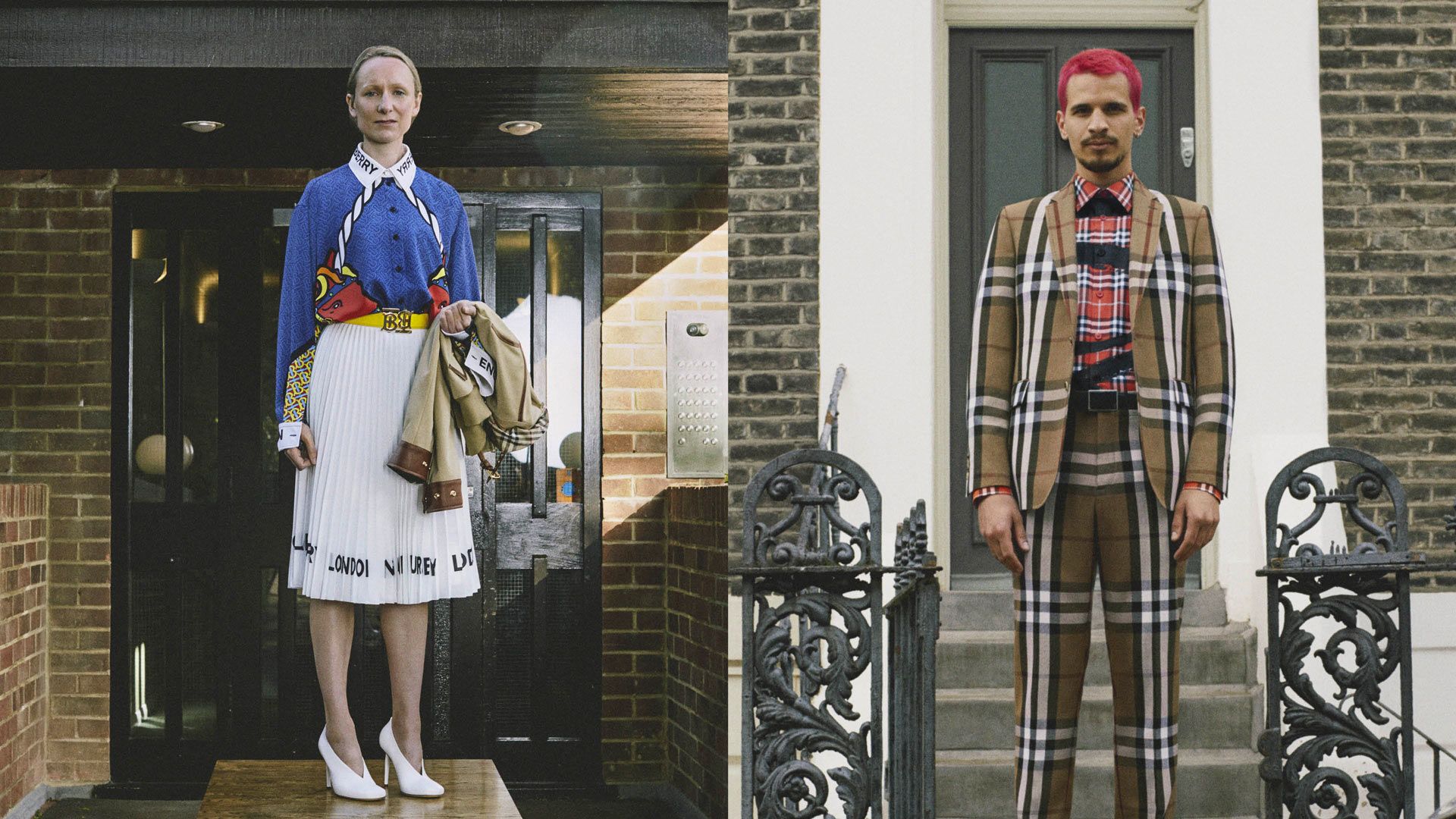-
Collaborative Fashion: The End of the All-Powerful Designer?

Twelve hours: that's the length of the video Gucci presented to unveil its 2021 Resort collection last July. It's an unexpected formal choice in an industry that's used to seeing shows wrap in ten minutes flat. To be more specific, the Italian house's artistic director Alessandro Michele chose to broadcast a non-stop Livestream — eight hours and twenty minutes long — transporting us backstage at Gucci's last major shoot. Several cameras were placed in the Palazzo Sacchetti on Via Giulia, in the heart of Rome. Spectators were able to watch technicians installing lights, adjusting them, the clothes arriving in their protective bags, models being made-up and stylists fussing over them. In a pop-up window, Alessandro Michele appears to explain — "I wanted to pay tribute to the magical ritual that is the fashion show: a sacred and unique ceremony, thanks to which creative thought is revealed and given as an interpretation to a community of free spectators. I'd like to raise the curtain on what goes on behind the scenes."
Revealing what goes on behind the scenes was also part of the creator's plan in February 2020 for Gucci's Autumn-Winter 2020/21 show. Invitees found themselves wandering through the dressing rooms backstage, amongst hair and make-up styling. In place of a traditional catwalk, Michele had opted for a slowly turning carousel with large windows, in which we saw the models getting dressed, assisted by uniformed valets, with Ravel's Bolero playing in the background. The artistic director was thus insisting upon the importance of the collective: a collection implicates a whole crowd of stylists, assistants, artisans, garment-makers. These helping hands are never credited at shows, and they often work in the shadows. Here, they're finally placed center stage. In the fashion industry, with its strict hierarchies and tendency to capitalize on celebrity creators, it's an intriguing formula.
The Team Player
"It's all about questioning the romantic myth of the artist creating independently to return to the idea of the collective. Michele's choice echoes the anti-fashion movement of the 80s, carried in large part by Japanese creators who rejected a system founded upon a given designer's dictation of style, directing their clients in the right way of dressing," states Manon Renault, a sociologist specialized in fashion studies. "This model of the invincible creator, constructed in the likeness of one of the founders of Parisian couture, Charles Frederick Worth, was among other things a way of elevating the couturier to the rank of the artist." The creative process was thus mystified to maintain the myth of genius, as was the case for Yves Saint Laurent, Karl Lagerfeld, or John Galliano in his Dior days. The latter's renown has indeed only heightened — named artistic director at Maison Margiela, he released a series of podcasts entitled "THE MEMORY OF...With John Galliano," a platform through which he analyzes his creative process, speaking well and often of his team and the ideas brought to him by interns. In another register, for its Summer 2021 pre-collection, Burberry selected members of Riccardo Tisci's team as its look-book muses, as well as boutique staff, rather than professional or superstar models. These shifts testify the rising interest in inclusivity — in desacralizing the celebrity individual for the benefit of the whole, fashion continues its descent from the pedestal.

Photos from Burberry's summer 2021 pre-collection lookbook.
"In our era, Western imperialist models that center the creator and are subject to unsustainable creative timelines are coming under greater scrutiny," Manon Renault continues. "In widening access to their behind-the-scenes, these brands are offering a new narrative that accounts for the long term, that illustrates the humans behind the products. We're able to put a face to people we do not usually see."
In 2019, Valentino's artistic director Pierpaolo Piccioli launched the movement by closing his couture show surrounded by 80 couturiers dressed in white. The image, one of a close-knit team, created a buzz. "The movement towards a more collaborative industry has been reinforced by the pandemic, which has placed new values in priority, notably those of humility, benevolence, and openness," says Ambre Vanessa, Fashion & Beauty Marketing Manager at Carlin Creative agency.
Transparency as Performance
Alongside this idea of community, Alessandro Michele insists on demystifying what goes on behind the scenes — showing spectators what before was hidden or obscured in the interest of greater transparency. Traditionally, the backstage was reserved for the happy few invited to congratulate the designer after his show. Virgil Abloh for Off-White recently launched a new Instagram account dubbed @off__white__seasons, a kind of "making-of" on his collections, rendering his creative process open to all. There are great tidbits, like a WhatsApp conversation between the designer and his creative team, audio recordings, meetings on prototypes, and more. Seeing the process is a novel experience in a world accustomed to keeping its trade secrets. "Fashion is showing us that it has nothing to hide. It's also an act in the interest of education, learning, and a return to a kind of deep style that avoids the ego trip. We see how collections are reflected upon, how each member of each team contributes his part to the entire construction," explains Ambre Venissac.
In the Interest of Community
During July's digital Fashion Week,Hermès revealed a video presenting their men's Spring-Summer 2021 collection. Entitled "Hors Champ" and created by director Cyril Teste, the film is a deep-dive backstage led by artistic director Véronique Nichanian. Cameras shadow the models, dressers, technicians and assistants in their work-in-progress. Rick Owens, for his part, showed us a fitting session in his Parisian atelier. Deeply concentrated, we watched him dress and photograph muse Tyrone Dylan Susman, an industrial soundtrack in the background.
"Fashion houses are responding to the demand for transparency on social media, a kind of performative proximity," explains Manon Renault. "We see a kind of staging of the behind-the-scenes: in its constructing, in its scripting, transparency is aestheticized. The act of unveiling becomes its own performance." To put it plainly, brands are borrowing codes from reality television, in the same way in which influencers selectively reveal their personal lives. Indeed, fashion actors must find ways of reconnecting with the public in the digital era. With his signature subtlety and poetic touch, Boramy Viguier shares excerpts from his notebooks and journals on his Instagram, a mix of drawings, photos, and notes that inspire him. It's one way of inviting us into his world, as much as it's an act of sharing and openness — a breath of fresh air from and for a landscape that's been craving one.